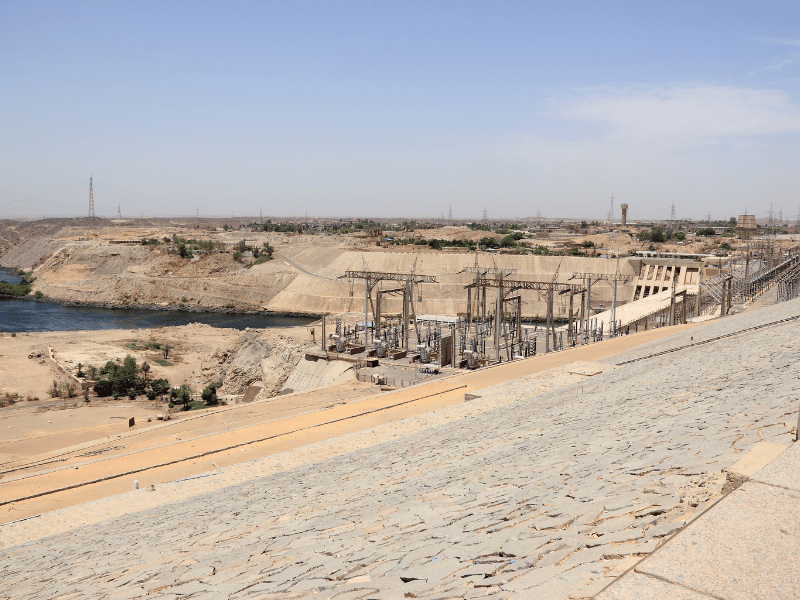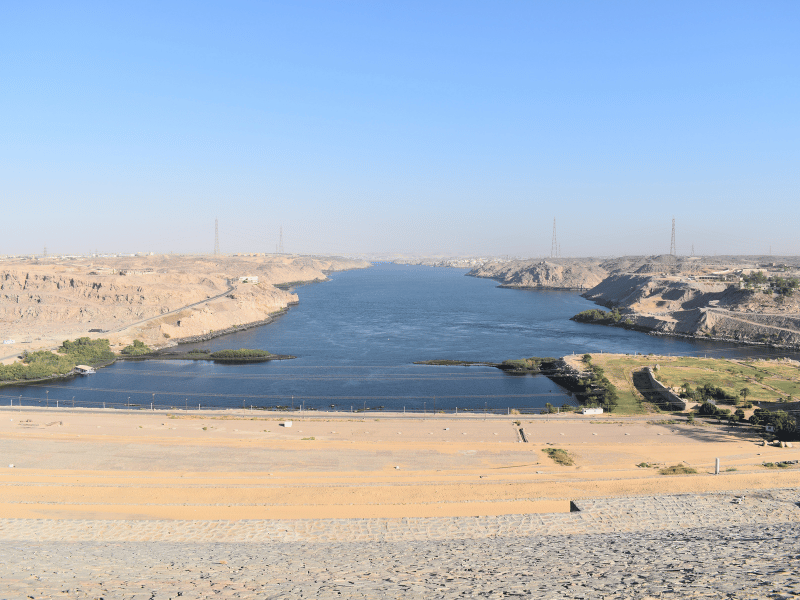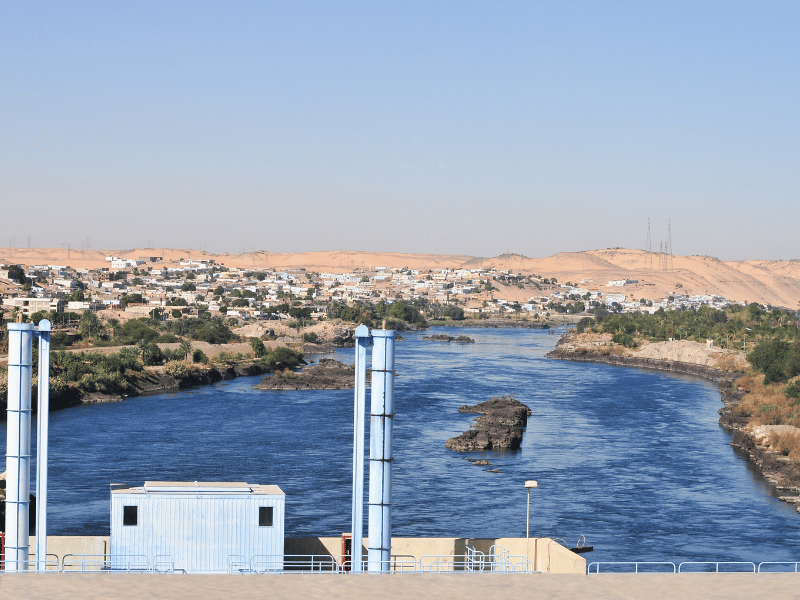Colossus Taming the World's Lifeblood
Looming mightily between desert and cultivated lands, a monumental structure emerges – the Aswan High Dam. At over 3.6km wide and 111m tall, this concrete barrier is an awe-inspiring feat harnessing the Nile’s energy and flooding cycles through hydropower and agriculture.
- Place: Aswan High Dam
- Country: Egypt
- Governorate: Aswan Governorate, Egypt
- Age: Constructed between 1960-1971
- Population: Nearby cities of Aswan and Kom Ombo
- Constructed by: Egyptian government and Russian advisors
- Famous for: Largest dam and hydroelectric station in Africa
- Nearby locations: Aswan city (15km north), Lake Nasser reservoir
Engineering Ingenuity Altering Ancient Lands
By containing the river’s seasonal floods within vast Lake Nasser, over 500,000 acres were reclaimed from deserts for expanded crop production. Controlling flows downstream through 18 opening spillways augments water supplies to populate Egypt’s populous north. Such ambitious vision marked a new chapter for one of humanity’s most enduring civilizations.



Safeguarding Cultural Heritage Through Unprecedented Efforts
Facing the dam’s construction threatened submerging over 100 archeological sites, global cooperation relocated over 40 monumental structures including Abu Simbel and Philae Temples to higher ground. Their rescue through unprecedented efforts heralded heritage protection’s growing importance alongside development, balancing progress and history for future benefit.
Catalyst for New Frontiers of Knowledge
Albeit controversial impacts, the dam fostered scientific advances through managing aquatic ecosystems, irrigation technologies and more affordable renewable energy. It demonstrated society’s potential overcoming technical obstacles with ingenuity and unity of vision, empowering our species to responsibly inhabit ever more diverse regions through open-minded cooperation.
Inspiring Stewardship of Shared Natural Bounties
Today, sustainable development around Lake Nasser aids livelihoods while preserving biodiversity within its scenic surroundings. The dam stands as a reminder that with prudent management of nature’s gifts, humanity need not despoil environments to thrive, but can carefully coexist as guardians for generations to inherit abundance. Through renewable resources and heritage saved, its impacts encourage hope for our shared future.



